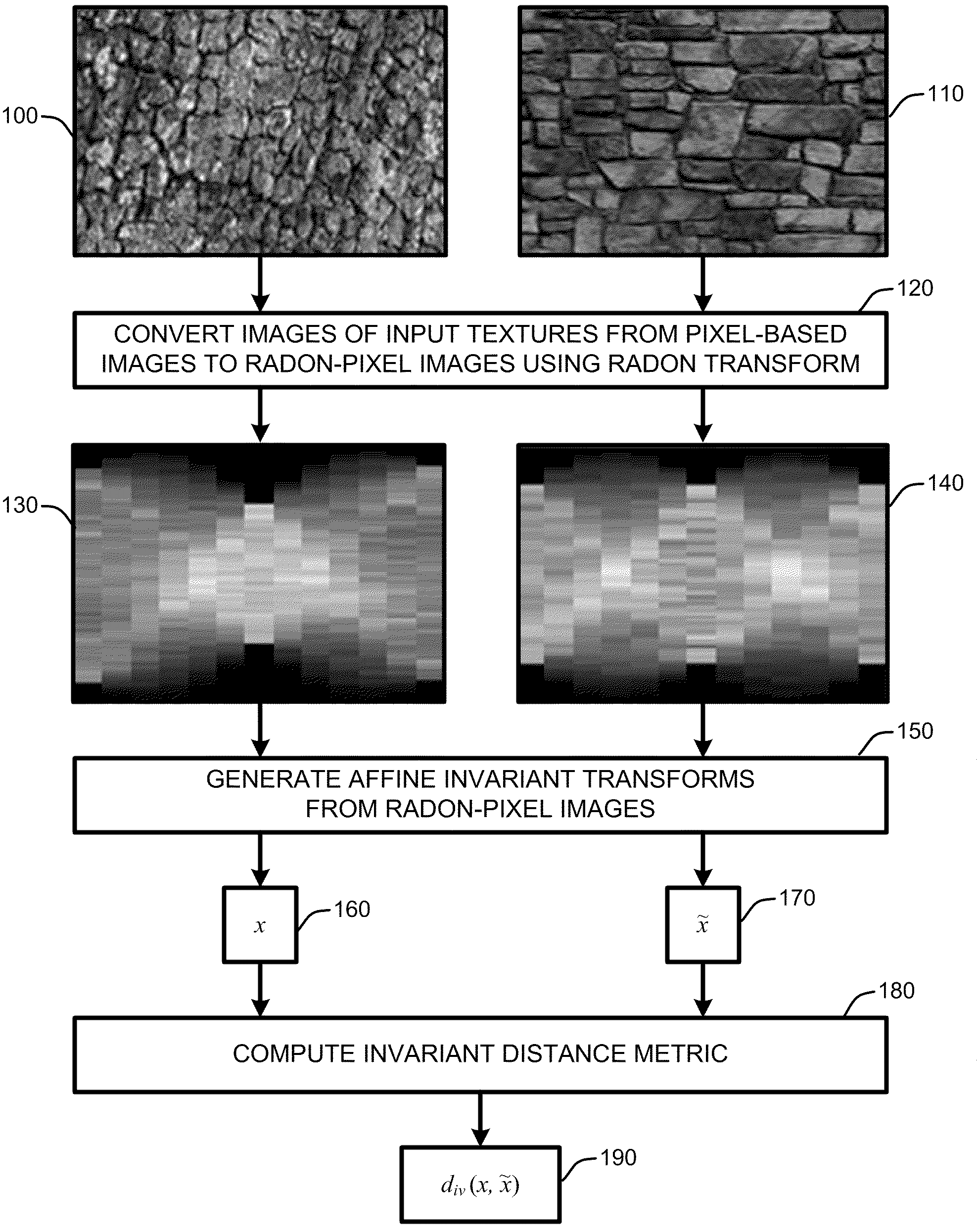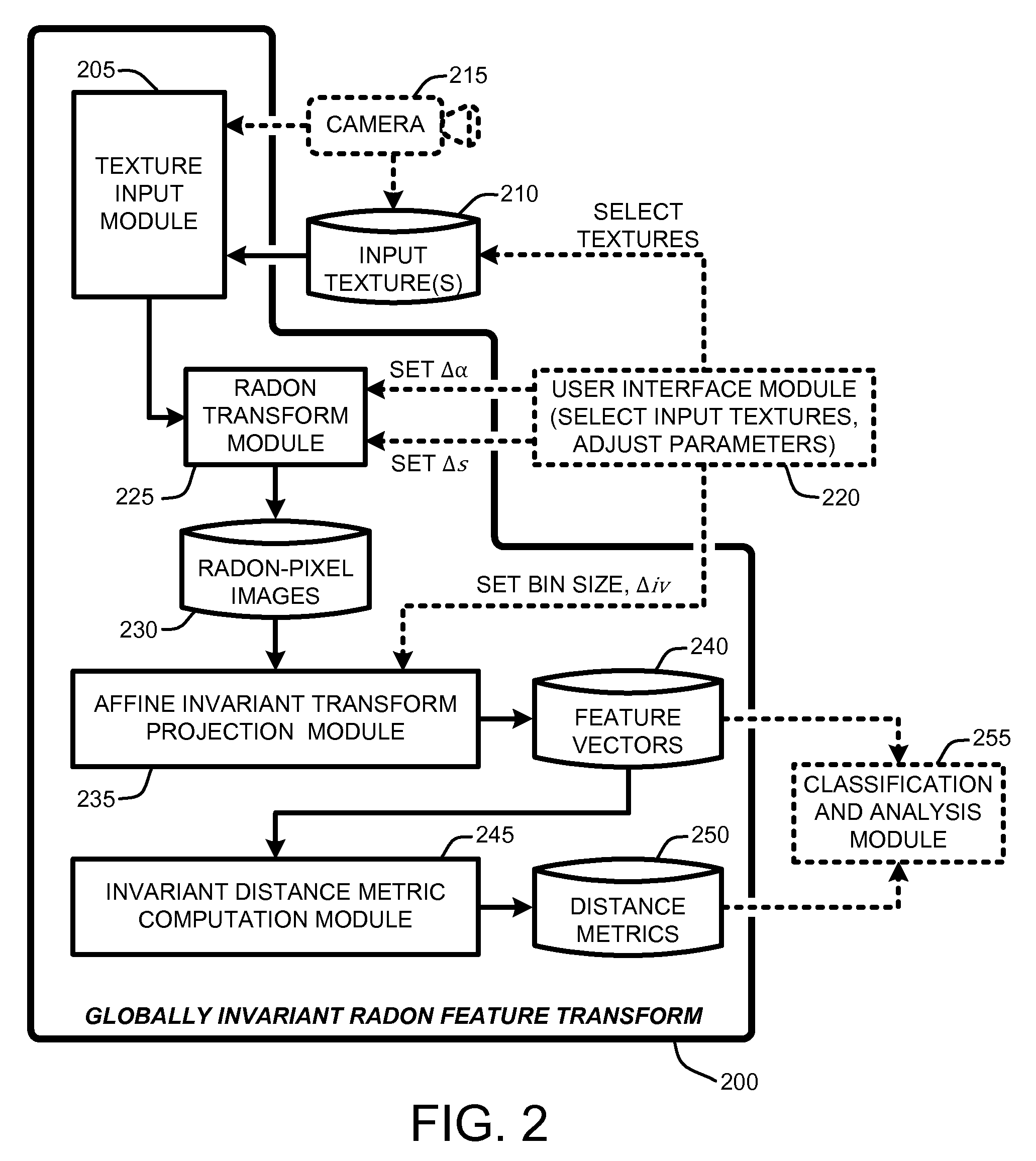Globally invariant radon feature transforms for texture classification
a feature transform and feature transform technology, applied in the field of global invariant radon feature transforms, can solve the problems of difficulty in simultaneously eliminating inter-class confusion and intra-class variation problems, the difficulty of conventional texture classification and analysis techniques in handling badly illuminated images, and the number of texture classification problems that remain unsolved
- Summary
- Abstract
- Description
- Claims
- Application Information
AI Technical Summary
Benefits of technology
Problems solved by technology
Method used
Image
Examples
Embodiment Construction
[0025]In the following description of the embodiments of the claimed subject matter, reference is made to the accompanying drawings, which form a part hereof, and in which is shown by way of illustration specific embodiments in which the claimed subject matter may be practiced. It should be understood that other embodiments may be utilized and structural changes may be made without departing from the scope of the presently claimed subject matter.
[0026]1.0 Introduction:
[0027]In general, a “globally invariant Radon feature transform,” or “GIRFT,” as described herein, provides various techniques for generating feature descriptors that are both globally affine invariant and illumination invariant. These feature descriptors effectively handle intra-class variations resulting from geometric transformations and illumination changes to provide robust texture classification.
[0028]In contrast to conventional feature classification techniques, the GIRFT-based techniques described herein consid...
PUM
 Login to View More
Login to View More Abstract
Description
Claims
Application Information
 Login to View More
Login to View More - R&D
- Intellectual Property
- Life Sciences
- Materials
- Tech Scout
- Unparalleled Data Quality
- Higher Quality Content
- 60% Fewer Hallucinations
Browse by: Latest US Patents, China's latest patents, Technical Efficacy Thesaurus, Application Domain, Technology Topic, Popular Technical Reports.
© 2025 PatSnap. All rights reserved.Legal|Privacy policy|Modern Slavery Act Transparency Statement|Sitemap|About US| Contact US: help@patsnap.com



